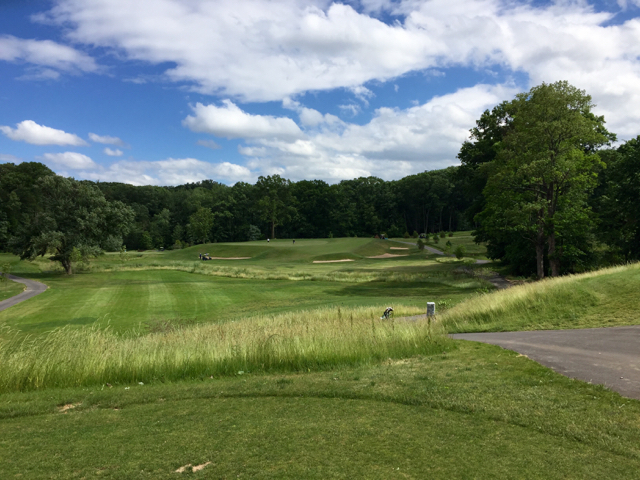I am resigned to the fact that I will never hit a 90 mph rising fastball, sink 10 free throws in a row, or kick a 40-yard field goal –- with or without a line of 300-pounders rushing at me. But at age 68, I fully expect in the coming years to conquer one of sport’s enduring challenges for rank amateurs –- to shoot my age in golf. That will happen only if I play from tee boxes appropriate to a game that no longer includes 230-yard drives (unless a rare solid strike comes while I am pointed downhill and with a strong wind at my back).
Most modern courses play from around 7,000 yards at the tips, roughly 6,600 yards at the tees one level closer (typically blue in color) and anywhere from 6,000 to 6,300 from the white tees at all but the most compact courses. That 300-yard difference can be larger than it appears, with most of the added degree of difficulty found in the par 4s. For example, at the redesigned Keney Park course in Hartford, CT, my new favorite layout in Connecticut, the back tees play to a modest 6,449 yards and the blue tees to just 6,046 yards, which at first blush seems short enough. But on closer inspection, three par 4s of the six on the front nine exceed 400 yards –- including a hole called Biarritz, which celebrates a design that features
After two rounds from the blue tees, and noting the difficulty of many of the approach shots to elevated and multi-level greens, I realized that the par 4s would always play as par 5s for me if I did not carry my tee shots more than 220 yards. And I can’t anymore. I was having no fun playing one third of the holes at Keney that were too long for my current game. (The par 3s and 5s were fine.)
Therefore, two weeks ago, I made the tough decision to move up to the white tees at Keney Park (and I will probably do the same on other layouts). At a total of 5,629 yards, that measured up as the shortest layout I have played since taking up the game 55 years ago -– and by about 300 yards. Those 400+ yard holes at Keney became a more reasonable 373, 363 and 380 yards, which meant medium to long irons (hybrid or fairway metals if the hole played into the wind). It was still a challenge, but a much more reasonable one. As for shortening of the already short par 4s on the course, two played a few yards under 300, but like most short par 4s by smart designers, these two had minefields aplenty -– or in the case of the 295 yard 12th hole, called “Wall” -– a cemetery immediately beside the fairway and immediately beyond the beautiful but menacing wall. (About 10 feet of grass beyond the wall and in the cemetery are in bounds, but good luck lofting anything but a lob wedge over that wall.)
 Even after you move up to the white tees (5,629 yards) at Keney Park, you still need to contend with challenging holes, like the menacing par 3 13th, which is 23 yards closer from the whites than the blue tees, but more uphill. (Photo is from blue tees; white tees just below the hill.)
Even after you move up to the white tees (5,629 yards) at Keney Park, you still need to contend with challenging holes, like the menacing par 3 13th, which is 23 yards closer from the whites than the blue tees, but more uphill. (Photo is from blue tees; white tees just below the hill.)For my first round from the white tees, I shot 79, one of my lowest rounds of the year. That score, and the specter of having a decent chance of par or better on every hole, reinvigorated my love of the game. On reflection, I identified a total of eleven wasted shots from badly struck chip shots, three-putt greens, poorly judged approaches and even one shanked short iron. My 79 minus those 11 strokes would have resulted in a 68. The dream of someday shooting my age is very much alive thanks to understanding my limitations and, literally, a bit of forward thinking.



